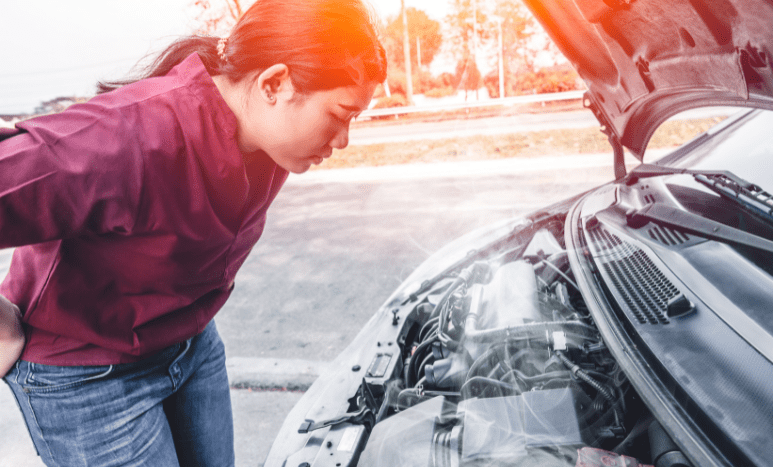What are the most common causes of your car overheating?
Engines overheat for various reasons, but the most common cause is a problem within the cooling system that prevents heat from escaping the engine compartment. This could be due to a cooling system leak, a faulty radiator fan, a broken water pump, or a clogged coolant hose.
Whatever the cause, the problem needs to be promptly addressed to prevent any serious—or worse, permanent—damage to your engine.
How do you know your engine is overheating?
Knowing when the engine is overheating is a must for any driver, no matter how new and inexperienced.
You should be able to recognize these signs:
- A white steam (which can look like smoke) bellowing out from under the hood.
- An engine temperature gauge that spikes to “H” or into the red on your dashboard. (However, refer to your owner’s manual since engine temperature gauge symbols vary.)
- A strange smell coming from the engine compartment: sweet if it’s a leaking coolant and burnt if it’s a leaking oil.
Ideally, you should be able to cool your engine before it overheats to the point of malfunctioning. This could reduce the risk of permanent engine damage.
What steps should you take when your engine overheats?
When you recognize the signs that your engine is overheating, don’t panic. The last thing you want to do is swerve through traffic or slam on your brakes.
Here are the steps you should take to avoid damage to your engine and for your own safety:
1. Switch off the A/C and crank turn up the heat.
Killing the A/C reduces the stress on the engine, and setting your heat temperature and fan speed to maximum can help suck heat away from your engine. Just roll down your windows if the heat gets uncomfortable.
2. Pull over safely and let the engine cool.
Find a safe spot to pull over and switch off the car. Allow the engine to cool for at least 15 minutes. Watch the temperature gauge: it should move back to a normal range as the engine cools. Avoid opening the hood until after 15 to 30 minutes to avoid burns and injuries. It’s also safe to stay in your car, especially if you’re in an area with heavy traffic.
3. Call roadside assistance
Having a roadside assistance plan can be a lifesaver. Professional help can reduce your stress level if something goes wrong with your car. (EverCare offers roadside assistance. See if it suits your needs.)
4. Check your coolant level.
Once your engine has cooled, check your coolant level. (Consult your owner’s manual to find the location of your coolant reservoir tank and to learn how to add coolant to your vehicle.)
A quick top-off helps protect your engine and prevent overheating until the problem is fixed. However, if a coolant hose is clogged or the problem is caused by a broken radiator fan or water pump, then topping off your coolant is not going to be of much use.
5. Restart the engine and drive carefully to the nearest repair shop.
If you’re not getting your car towed, carefully restart your engine and drive slowly to your nearest auto repair shop. Watch your temperature gauge as you drive. If it rises again, pull over and let the engine cool.
Knowing the proper steps to take in response to an overheated engine is vital for any driver. Not only will it spare your engine from irreversible damage, it will also prevent you from panicking and putting yourself and other motorists in danger.
For great savings on repairs and maintenance work, check out our products.

